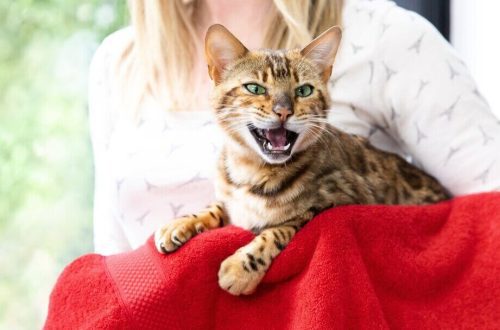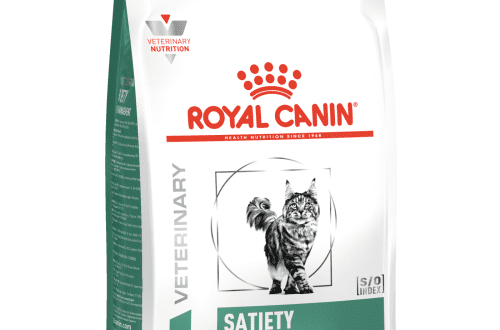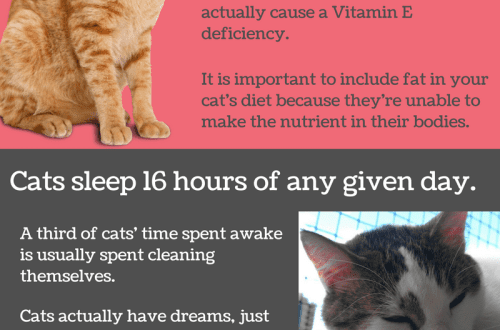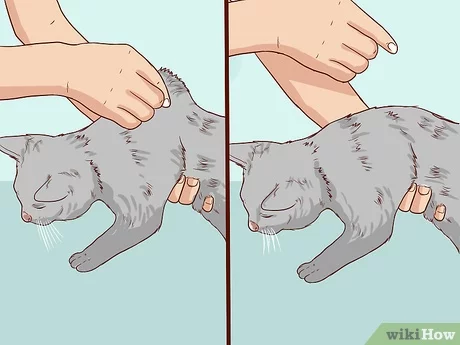
Dehydration in a cat: signs and treatment
One of the tasks of the owner of the cat is to ensure that she drinks enough water, which she needs for health. If your pet has stopped visiting his water bowl regularly, it’s time to find out why.
To paraphrase a popular saying, you can lead a cat to water, but you can’t make it drink. However, there are several ways to prevent dehydration in cats.
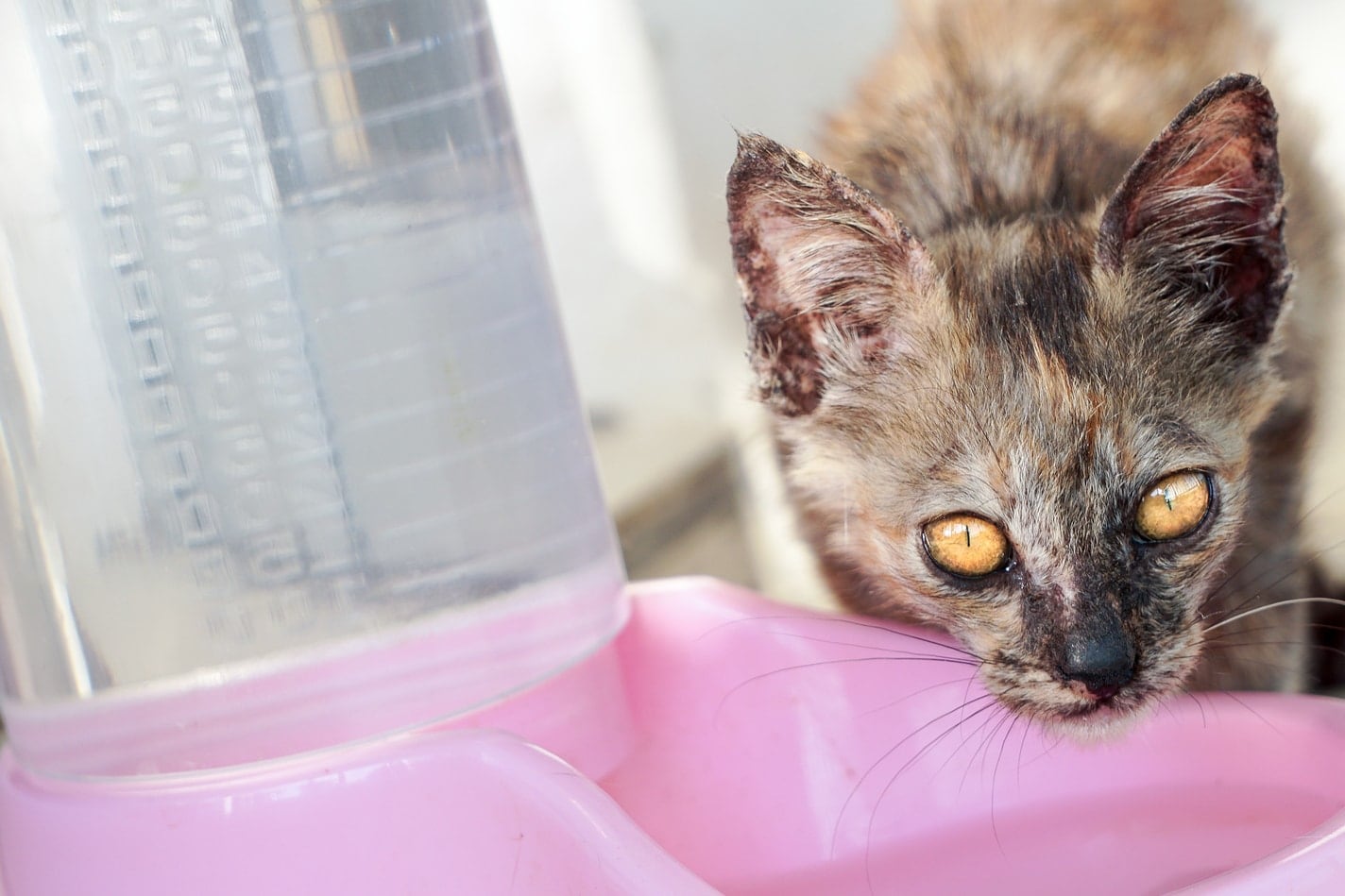
Contents
How much water is considered sufficient
To prevent dehydration in a cat, she needs round-the-clock access to fresh drinking water. It is necessary to keep her bowl clean and refill it regularly. This is especially important if the drinking bowl is next to the food bowl. If she stands next to a bowl of food, the cat may drop a few pieces of food into the water.
A cat does not need much water daily.
Cats do not drink as much water per kilogram of body weight as dogs. The amount of water a cat needs will depend on the food it eats as well as environmental conditions.
Cats usually drink about 30g of water for every 15g of dry food. Moist food, on the other hand, provides a cat with food and moisture at the same time and can help keep them hydrated.
The cat does not drink water
To avoid the complications of dehydration and learn how to encourage your cat to drink more water, you first need to understand why he is not drinking enough.
In the absence of serious pet health problems, you should start with the basics. Do pieces of food, hairs, dust clods and other debris float in her water? The fluffy beauty needs clean water, so you should wash your cat’s bowl regularly and change the water in it at least once a day – or more often.
“It should be noted that some cats just don’t like where their water bowl is,” explains Dr. Deborah Lichtenberg, veterinarian at Petful. She did some experiments at her home to see if changing the location of the bowl would affect how much water the cats drank. In her case, the decision to move the water bowls away from the food bowls helped.
You can try repeating this experiment to see if your kitty is picky about where her water bowl is.
The physics of cat throats
The cat will not drink a lot of water at a time. The MIT News portal notes that, unlike a dog happily swallowing water, a cat drinks in its own complex pattern.
Instead of scooping up water, the cat’s tongue barely touches the surface and returns to the mouth. This rapid movement creates a tiny column of water that the cat grabs by closing its mouth before it falls back into the bowl under gravity. It’s hard to see this thread of liquid without filming it with a modern camera, because cats can make up to four such tongue movements per second – and all this with a completely dry chin!
Do not worry if the cat does not spit out liters of water and splash it everywhere. She takes her own delicate approach. Sometimes our pets even gracefully lower their paw into a bowl and lick the water off it. In general, if a cat drinks several sips of water a day and gets moisture from its food, it is quite enough for it.
How to know if a cat is dehydrated
If a cat does not drink enough water, it will be at risk of dehydration. Dehydration occurs when the levels of body fluids, including water and electrolytes, drop below what is needed. This causes problems with energy, skin and organ functions. If the animal does not drink water, this does not necessarily lead to dehydration, but quite often becomes its cause or symptom.
Causes
Dehydration can develop in a cat because it does not drink enough fluids or excretes more fluid in the urine than it consumes, or, in extreme situations, due to vomiting, diarrhea, or blood loss.
Preventive Vet reports that dehydration can be linked to kidney disease, heatstroke, and diabetes. Older animals and cats with thyroid disorders are at increased risk of dehydration.
Symptoms
One easy way to determine if a cat is dehydrated is to test the elasticity of the skin with the “tent” method – you need to put the cat on your lap and gently pull the skin at the withers. If the cat is all right with the level of fluid in the body, the skin will quickly return to its normal position. If it stays in the crease or comes back very slowly, your cat probably needs more fluid.
Additional symptoms to watch out for:
● weakness,
● loss of appetite,
● shortness of breath,
● salivation,
● rapid heartbeat,
● weak pulse,
● dry or sticky gums,
● shiver,
● excessive or, conversely, rare urination.
You should contact your veterinarian immediately if your cat has any of these signs.
Petcha notes that, just as with a person drinking a sports drink after a vigorous run, a cat with these symptoms may be deficient in critical electrolytes, such as sodium.
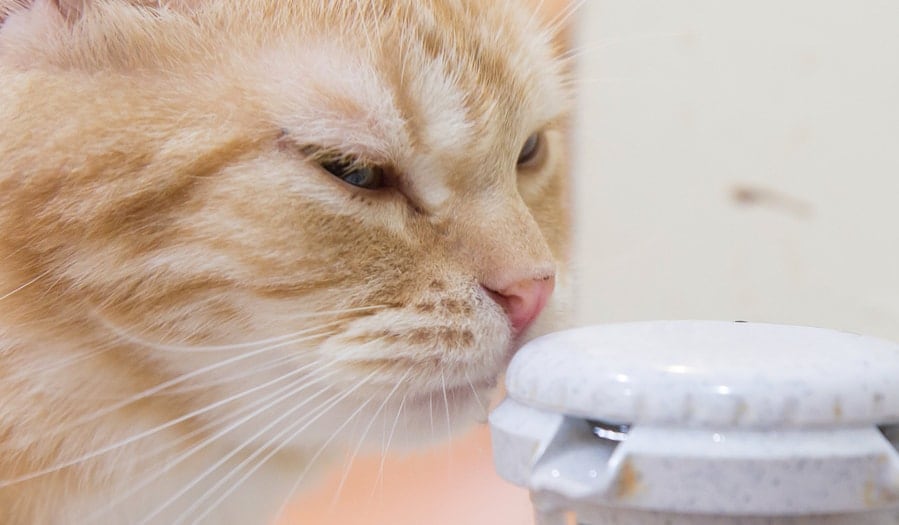
How to get a cat to drink water when dehydrated
If the cat does not drink water even after pet health problems have been ruled out, you will have to resort to tricks. There are several ways to get a cat to drink water.
Cats can be very picky for a variety of reasons. If the pet does not want to drink from a bowl, you can put her a drinking fountain, which will not only constantly provide her with fresh water, but also give her the opportunity to play with splashes.
Such an accessory will also save water, since you do not have to leave the faucet in the bathroom on. Some cats don’t like the idea of standing water – their ancient feline instinct tells them it’s safer to drink running water.
Small changes in a cat’s life can also encourage her to drink more water, suggests Animal Planet. One way is to arrange several places for drinking. Place bowls of water around the house, including in new places that might make the cat curious.
Different bowl materials, including ceramic, metal, and glass, can also encourage a cat to try and explore.
Eating wet food helps prevent dehydration, as dry food is 10% water, while wet food is 70-80%. Hill’s Science Plan cat food caters for all tastes. If she doesn’t like canned food, you can add water to the dry food or mix wet and dry food in the same bowl.
All the elements of proper nutrition, as well as fresh drinking water, will help the cat to be cheerful and energetic all day long. And the owner – to be sure that he chose the best for his pet.



